Chlorohydrin News
Chlorohydrin
-
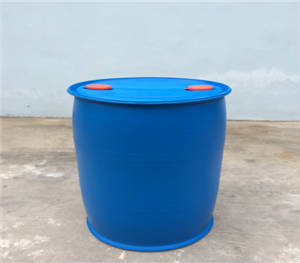
- Cas No.:107-07-3
- Appearance:Colorless liquid
- Molecular Formula:C2H5ClO
- ProductionCapacity:
- Inquiry
Detailed information
Chlorohydrin Chemistry
Formula C2H5ClO
Molecular weight 80.52
CAS No 107-07-3
Appearance Colorless liquid
Assay (GC, area%) ≥ 99%
Acid value(Calculation based HCl) ≤ 0.05%
Water (according to Karl Fischer) ≤ 0.10%
Density (at 20°C, g/ml) 1.200 - 1.203
Chlorohydrin Uses
Chlorohydrin is a building block in the production of pharmaceuticals, biocides and plasticizers. It is also used for manufacture of thiodiglycol. It is a solvent for cellulose acetate and ethyl cellulose, textile printing dyes, extraction of pine lignin, in dewaxing, refining of rosin, and the cleaning of machines.
Several dyes are prepared by the alkylation of aniline derivatives with chloroethanol.
Chlorohydrin can affect you when breathed in and by passing through your skin.
Chlorohydrin may cause reproductive damage.Handle with extreme caution.
Contact can cause skin and eye irritation.
Breathing Chlorohydrin can irritate the nose and throat causing coughing and wheezing.
Breathing Chlorohydrin can irritate the lungs causing coughing and/or shortness of breath. Higher exposures may cause a build-up of fluid in the lungs
(pulmonary edema), a medical emergency, with severe shortness of breath.
Chlorohydrin can cause nausea, vomiting and abdominal pain.
Chlorohydrin can affect concentration and memory and can cause headache. dizziness.lightheadedness. confusion. seizures (fits) and passing out.
Higher levels can cause coma and even death.
High or repeated exposure can damage the nerves causing weakness, "pins and needles." and poor coordination in arms and legs.
Chlorohydrin can cause liver and kidney damage.
Breathing Chlorohydrin can irritate the nose and throat causing coughing and wheezing.
Breathing Chlorohydrin can irritate the lungs causing coughing and/or shortness of breath. Higher exposures may cause a build-up of fluid in the lungs
(pulmonary edema), a medical emergency, with severe shortness of breath.
Chlorohydrin can cause nausea. vomiting and abdominal pain.
Chlorohydrin can affect concentration and memory and can cause headache. dizziness.lightheadedness. confusion, seizures (fits) and passing out.Higher levels can cause coma and even death.
Chlorohydrin Production
Chlorohydrin is produced by treating ethylene with hypochlorous acid:
CH2=CH2 + HOCl → HOCH2CH2Cl
Chlorohydrin Toxicity Data With Reference
1. skn-rbt 200 mg/2H MLD
TXAPA9 Toxicology and Applied Pharmacology. 16 (1970),382.
2. eye-rbt 2 mg SEV
AJOPAA American Journal of Ophthalmology. 29 (1946),1363.
3. eye-rbt 33 mg MOD
TXAPA9 Toxicology and Applied Pharmacology. 16 (1970),382.
4. eye-rbt 9 mg/6H MOD
BUYRAI Bulletin of Parenteral Drug Association. 31 (1977),25.
5. sln-asn 74,500 μmol/L
MUREAV Mutation Research. 138 (1984),33.
6. oms-rat:lvr 12 g/L
JACTDZ Journal of the American College of Toxicology. 1 (3)(1982),37.
7. ihl-man LCLo:305 ppm/2H
JIHTAB Journal of Industrial Hygiene and Toxicology. 26 (1944),277.
8. orl-rat LD50:71 mg/kg
HYSAAV Hygiene and Sanitation: English Translation of Gigiena Sanitariya. 36 (1971),376.
9. ihl-rat LC50:290 mg/m3
HYSAAV Hygiene and Sanitation: English Translation of Gigiena Sanitariya. 26 (1971),376.
10. ipr-rat LD50:58 mg/kg
TXAPA9 Toxicology and Applied Pharmacology. 21 (1972),454.
RTECS :KK0875000
Chlorohydrin is toxic with an LD50 of 89 mg/kg in rats.
Chlorohydrin Consensus Reports
NTP Carcinogenesis Studies (dermal); No Evidence: mouse, rat NTPTR* National Toxicology Program Technical Report Series. (Research Triangle Park, NC 27709) No. NTP-TR-275 ,1985. ; Reported in EPA TSCA Inventory. EPA Genetic Toxicology Program. EPA Extremely Hazardous Substances List.
Chlorohydrin Safety Profile
A poison by ingestion, inhalation, skin contact, intraperitoneal, intravenous, and subcutaneous routes. Moderately toxic to humans by inhalation. It can affect the nervous system, liver, spleen, and lungs. An experimental teratogen. Mutation data reported. A severe eye and mild skin irritant. Flammable liquid when exposed to heat, flame, or oxidizers. To fight fire, use alcohol foam, CO2, dry chemical. Violent reaction with chlorosulfonic acid, ethylene diamine, sodium hydroxide. Reacts with water or steam to produce toxic and corrosive fumes. Potentially violent reaction with oxidizing materials. When heated to decomposition it emits highly toxic fumes of Cl? and phosgene. See also CHLORINATED HYDROCARBONS, ALIPHATIC.
Like most organochlorine compounds, Chlorohydrin combusts to yield hydrogen chloride and phosgene.
Hazard Codes: T+,T,F
Risk Statements : 26/27/28-39/23/24/25-11
Safety Statements : 28-45-7/9-28A-36/37-16
RIDADR :UN 1135 6.1/PG 1
WGK Germany 3
Chlorohydrin Standards and Recommendations
OSHA PEL: CL 1 ppm (skin)
ACGIH TLV: CL 1 ppm (skin); Not Classifiable as a Human Carcinogen
DFG MAK: 1 ppm (3.3 mg/m2)
DOT Classification: 6.1; Label: Poison
Chlorohydrin Analytical Methods
For occupational chemical analysis use NIOSH: Chlorohydrin, 2513.
Chlorohydrin Specification
Other names of Chlorohydrin :2-chloroethyl alcohol, Chlorohydrin, 2-chloro-1-ethanol, 2-monochloroethanol,glycol chlorohydrin, 2-hydroxyethyl chloride, β-hydroxyethyl chloride, β-chloroethanol,chloroethanol,ethylchlorhydrin, δ-chloroethanol, Chlorohydrin, glycol monochlorohydrin.
Chlorohydrin Chronic Health Effects
The following chronic (long-term) health effects can occur at some time after exposure to Chlorohydrin and can last for months or years:
Chlorohydrin Cancer Hazard
There is no evidence that Chlorohydrin causes cancer in animals. This is based on test results presently available to the New Jersey Department of Health and Senior Services from published studies.
Chlorohydrin Reproductive Hazard
Chlorohydrin may cause reproductive damage Handle with extreme caution.
Chlorohydrin Other Long-Term Effects
Chlorohydrin can irritate the lungs. Repeated exposure may cause bronchitis to develop with cough,phlegm, and/or shortness of breath.
High or repeated exposure can damage the nerves causing weakness, "pins and needles." and poor coordination in arms and legs.
Chlorohydrin can cause liver and kidney damage.
Chlorohydrin Mixed Exposures
Because more than light alcohol consumption can cause liver damage, drinking alcohol can increase the liver damage caused by Chlorohydrin.
the following control is recommended to chlorohydrin
where possible, automatically pump liquid chlorohydrin from drums or other storage containers to process containers.good work practices can help to reduce hazardous
exposures.
the following work practices are recommended to chlorohydrin
workers whose clothing has been contaminated by chlorohydrin should change into clean clothing promptly.
contaminated work clothes should be laundered by individuals who have been informed of the hazards of exposure to chlorohydrin.
eye wash fountains should be provided in the immediate work area for emergency use.
if there is the possibility of skin exposure, emergency shower facilities should be provided.
on skin contact with ethylene chlorohydrin,immediately wash or shower to remove the chemical. at the end of the workshift, wash any areas of the body that may have contacted chlorohydrin, whether or not known skin contact has occurred.
do not eat. smoke. or drink where chlorohydrin is handled, processed. or stored, since the chemical can be swallowed. wash hands carefully before eating, drinking, smoking, or using the toilet.
chlorohydrin handling and storage
prior to working with chlorohydrin you should be trained on its proper handling and storage.
ethylene chlorohydrin reacts violently with chlorosulfonic acid; ethylene diamine;sodium hydroxide and oxidizing agents(such as perchlorates. peroxides,permanganates. chlorates. nitrates,chlorine. bromine and fluorine).
chlorohydrin is not compatible with strong bases (such as potassium hydroxide); strong acids (such as hydrochloric, sulfuric and nitric); and alkaline metals.
store in tightly closed containers in a cool. well-ventilated area away from water and steam as corrosive gases are produced.
sources of ignition. such as smoking and open flames, are prohibited where chlorohydrin is used, handled. or stored in a manner that could create a potential fire or explosion hazard.
Epichlorohydrin
Epichlorohydrin (abbreviated ECH) is an organochlorine compound and an epoxide. Despite its name, it is not a halohydrin. It is a colorless liquid with a pungent, garlic-like odor, moderately soluble in water, but miscible with most polar organic solvents.[4] It is a chiral molecule generally existing as a racemic mixture of right-handed and left-handed enantiomers. Epichlorohydrin is a highly reactive compound and is used in the production of glycerol, plastics, epoxy glues and resins, and elastomers. In contact with water, epichlorohydrin hydrolyzes to 3-MCPD, a carcinogen found in food.
Epichlorohydrin Production
Epichlorohydrin was first described in 1848 by Marcellin Berthelot. The compound was isolated during studies on reactions between glycerol and gaseous hydrogen chloride.
Epichlorohydrin is manufactured from allyl chloride in two steps, beginning with the addition of hypochlorous acid, which affords a mixture of two alcohols:
CH2=CHCH2Cl + HOCl → HOCH2CHClCH2Cl and, or ClCH2CH(OH)CH2Cl
In the second step, this mixture is treated with base to give the epoxide:
In this way, more than 800,000 tons (1997) of epichlorohydrin are produced annually.
Epichlorohydrin From glycerol
Glycerol is a co-product of biodiesel produced on a large scale. The conversion of glycerol into other building block chemicals is of interest because glycerol is otherwise hard to dispose of. Dow and Solvay are building glycerol-to-epichlorohydrin (GTE) plants in Shanghai and Thailand, respectively. In Dow's process, glycerol is dichlorinated with hydrogen chloride with the help of a carboxylic acid catalyst. The mixture of dichlorohydroxypropanes is treated with base to form epichlorohydrin.
Epichlorohydrin Applications
Epichlorohydrin Glycerol and epoxy resins synthesis
Epichlorohydrin is mainly converted to bisphenol A diglycidyl ether, a building block in the manufacture of epoxy resins. It is also a precursor to monomers for other resins and polymers. Another usage is the conversion to synthetic glycerol:
CH2CHOCH2Cl + 2 H2O → HOCH2CH(OH)CH2(OH) + HCl
However, the rapid increase in biodiesel production, where glycerol is a waste product, has led to a glut of glycerol on the market, rendering this process uneconomic for the mass market. Synthetic glycerol is now used only in sensitive pharmaceutical, technical and personal care applications where quality standards are very high.
Epichlorohydrin Minor and niche applications
Epichlorohydrin is a versatile precursor in the synthesis of many organic compounds. For example, it is converted to glycidyl nitrate, an energetic binder used in explosive and propellant compositions.[12] The epichlorohydrin is reacted with an alkali nitrate, such as sodium nitrate, producing glycidyl nitrate and alkali chloride. It is used as a solvent for cellulose, resins, and paints, and it has found use as an insect fumigant.
Polymers made from epichlorohydrin, e.g., polyamide-epichlorohydrin resins, are used in paper reinforcement and in the food industry to manufacture tea bags, coffee filters, and sausage/salami casings as well as with water purification.
An important biochemical application of epichlorohydrin is its use as crosslinking agent for the production of Sephadex size-exclusion chromatographic resins from dextrans.
Epichlorohydrin Safety
Epichlorohydrin is classified by several international health research agencies and groups as a probable or likely human carcinogen in humans. Prolonged oral consumption of high levels of epichlorohydrin could result in stomach problems and an increased risk of cancer. Occupational exposure to epichlorohydrin via inhalation could result in lung irritation and an increased risk of lung cancer.
Synthesis of chlorohydrins
Recent Literature
Highly regioselective ring opening of epoxides to halohydrins has been carried out in impressive yields with hydrogen and lithium halides in presence of β-cyclodextrin using water as solvent.
M. Arjun Reddy, K. Surendra, N. Bhanumathi, K. Rama Rao, Tetrahedron, 2002, 58, 6003-6008.
The preparation of diverse β-chloroethers, β-chloroacetates, and chlorohydrins is efficiently achieved under mild conditions by reaction of alkenes with trichloroisocyanuric acid in alcohols, acetic acid or aqueous acetone, respectively.
G. Fonseca Mendon?a, A. Manzolillo Sanseverino, M. C. S. de Mattos, Synthesis, 2003, 45-48.
PhICl2 in wet DMF forms an efficient system for difunctionalization of various alkenes to provide either regioselective chloroformyloxylated products or α-chlorinated olefinic products, depending on the type of structure of the original unsaturated starting material. The mechanism of the reaction is proposed and discussed.
L. Liu, D. Zhang-Negrerie, Y. Du, K. Zhao, Org. Lett., 2014, 16, 436-439.
An optically active, C2-symmetric allene-containing bisphosphine oxide catalyzes the addition of SiCl4 to meso-epoxides with high enantioselectivity. The epoxide opening likely involves generation of a Lewis acidic, cationic (bisphosphine oxide)SiCl3 complex.
X. Pu, X. Qi, J. M. Ready, J. Am. Chem. Soc., 2009, 131, 10364-10365.
α-Chlorohydrin
Molecular Formula:C3H7ClO2
Average mass:110.539 Da
Monoisotopic mass:110.013458 Da
ChemSpider:ID7018


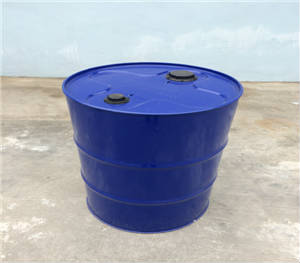
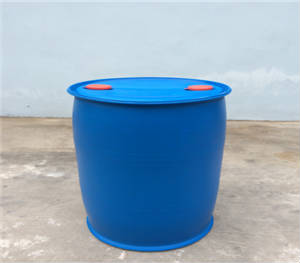
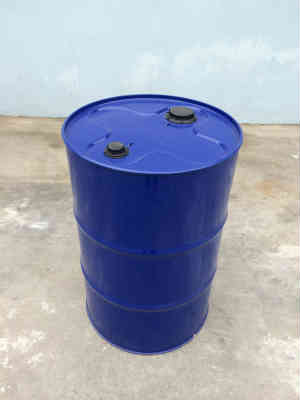
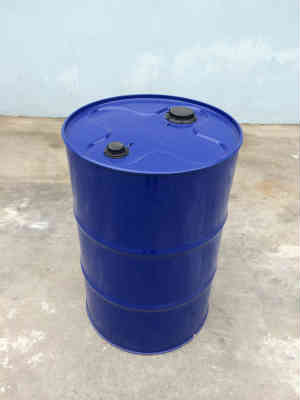
 < /a>
< /a>